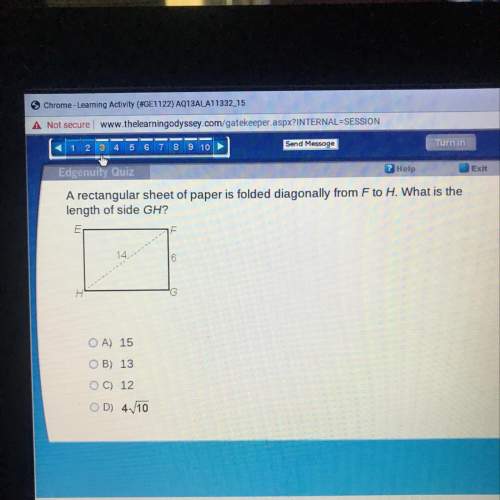
Mathematics, 25.04.2020 04:22 mrsburrus
We determined that f(y1, y2) = 6(1 − y2), 0 ≤ y1 ≤ y2 ≤ 1, 0, elsewhere is a valid joint probability density function. (a) Find E(Y1|Y2 = y2). E(Y1|Y2 = y2) = (b) Use the answer derived in part (a) to find E(Y1). (Compare this with E(Y1) found using the marginal density function f1(y1) = 3(1 − y1)2.) E(Y1) =

Answers: 1


Another question on Mathematics

Mathematics, 20.06.2019 18:02
2predicting population growth worksheet answer key 3. how do fertility rates compare to overall population rates of the world
Answers: 3

Mathematics, 21.06.2019 17:30
Lance lived in portugal and brazil for a total of 14 months to learn portuguese. he learned an average of 130 new words per month when he lived in portugal, and an average of 150 new words per month when he lived in brazil. in total he learned 1920 new words. write a system of equations to represent the situation. use x to represent portugal, and y to represent brazil
Answers: 1

Mathematics, 21.06.2019 19:30
Given a: b and b: c, find a: b: c. write the ratio in simplest form. a: b=6: 10 and b: c=21: 33
Answers: 1

Mathematics, 21.06.2019 21:00
Can some one explain how to slove specifically, what is the value of x? 0.9(x+1.4)-2.3+0.1x=1.6 enter the answer as a decimal in the box. x= ?
Answers: 2
You know the right answer?
We determined that f(y1, y2) = 6(1 − y2), 0 ≤ y1 ≤ y2 ≤ 1, 0, elsewhere is a valid joint probability...
Questions

History, 30.01.2020 16:03




Mathematics, 30.01.2020 16:03




Chemistry, 30.01.2020 16:03


History, 30.01.2020 16:03

Mathematics, 30.01.2020 16:03



Mathematics, 30.01.2020 16:03



Geography, 30.01.2020 16:03





